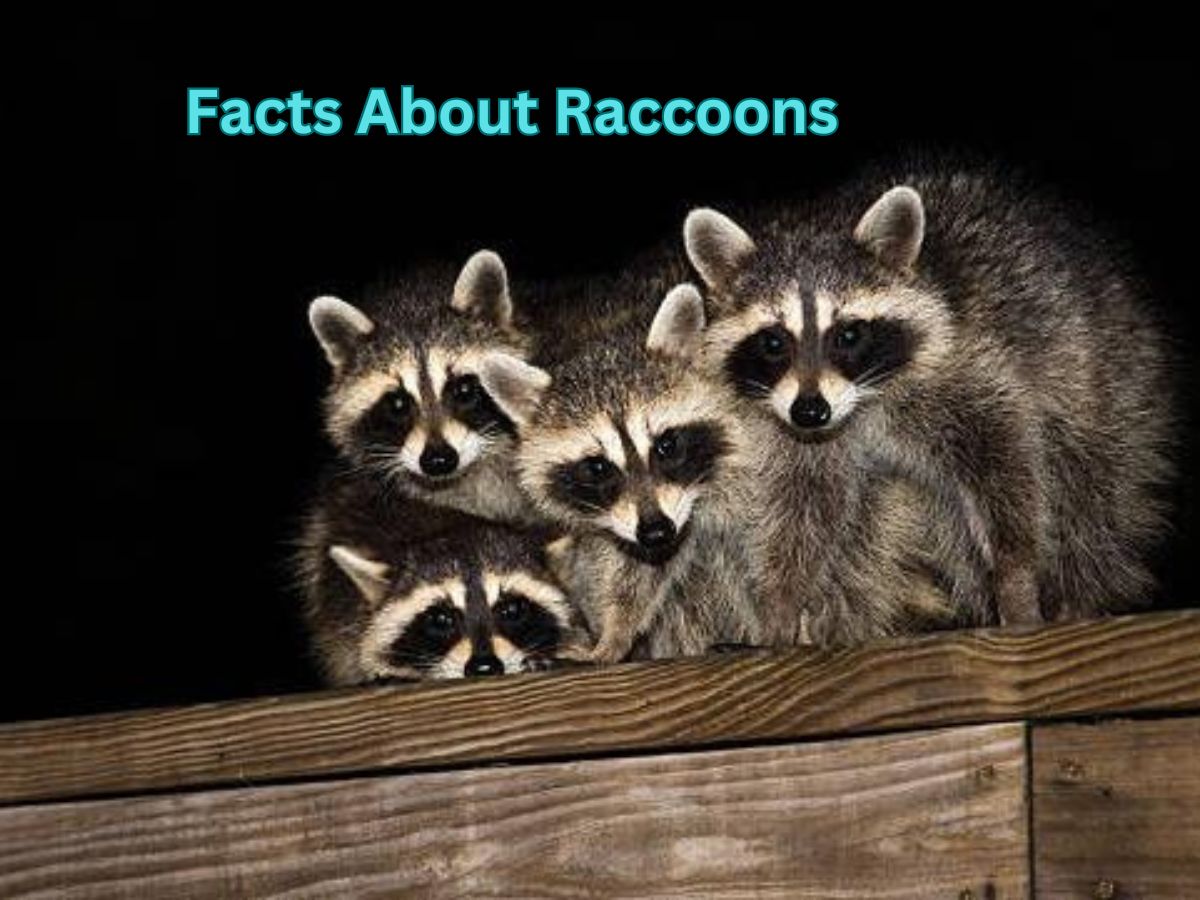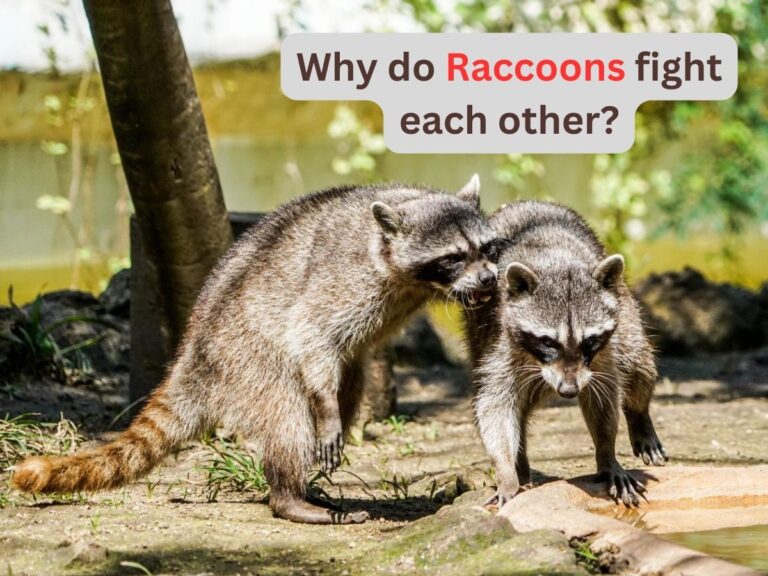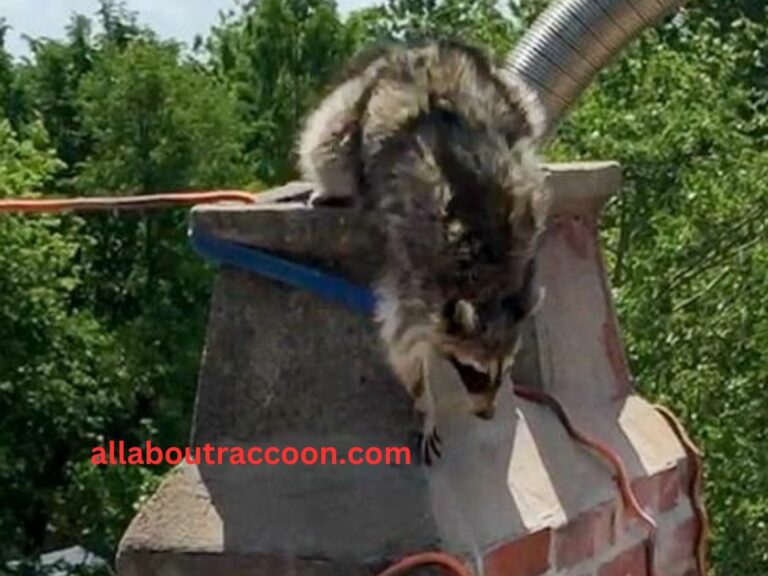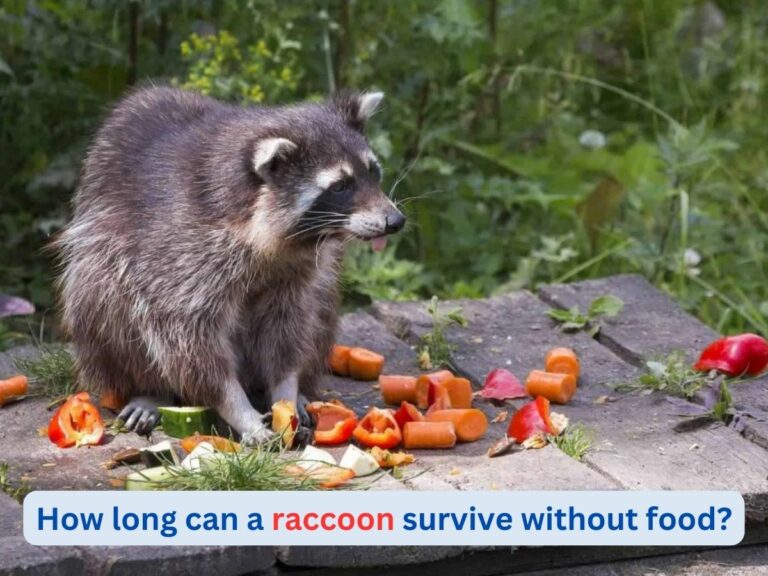Facts About Raccoons- An in-depth look!
Facts about raccoons: Raccoons are clever and mischievous creatures. They are native to North America and are often called masked bandits of the animal kingdom. They have a charming look that captivates us. Some people take them as pets while others do not. These furry mammals have long been a subject of fascination for both nature enthusiasts and casual observers.
In this article, we will explore the world of raccoons and learn some interesting facts that might surprise you. So, let’s read on and discover the truth about these fascinating creatures.
Facts about raccoons!
These sweet and cute-looking creatures have intriguing facts about their life. Here is a list of captivating facts about raccoons:
1. Native to North America:
Raccoons (Procyon lotor) are indeed native to North America. Their natural range encompasses southern Canada, the United States, Mexico, and parts of Central America.
However, it’s important to note that raccoons have been introduced to certain regions in Europe and Asia, primarily due to the exotic pet trade. In these non-native areas, raccoon populations are not considered indigenous and often arise from escaped or released individuals. In some cases, these non-native populations can become invasive species, leading to ecological and agricultural issues.
Consequently, raccoons are native to North America but have been introduced to other parts of the world beyond their natural range
2. Unique fact about the Raccoon name:
A unique fact about the raccoon’s name is that it is derived from the Native American Algonquian language. The word “raccoon” is believed to have originated from the Powhatan word “aroughcun,” which was used by the Powhatan people in what is now Virginia.
The term “aroughcun” roughly translates to “he who scratches with his hands.” This name refers to the raccoon’s characteristic habit of using its dexterous paws. Basically, raccoons use their dexterous paws to manipulate and forage for food.
So, the name “raccoon” essentially means “the animal that scratches with its hands,” highlighting one of the distinctive features of a raccoon.
3. The Ingenious Raccoon Hands
Raccoons possess remarkably dexterous paws, resembling tiny human hands. These hands are not just endearing but highly functional. Raccoons employ them for various tasks, such as opening doors or foraging for food. Their nimble fingers can manipulate objects with surprising precision, leading some to believe that raccoons have an innate talent for lock-picking. It’s no wonder they’re often affectionately referred to as the “masked burglars” of the animal world!
4. Nocturnal Navigators:
Have you ever wondered why raccoons are primarily nocturnal creatures? It turns out that their preference for the cover of darkness is not merely a matter of convenience. Raccoons have adapted to the night to avoid predators and competition. Their excellent night vision and keen sense of smell. This helps them hunt for food while everyone else is asleep. They’re like nighttime detectives finding their dinner!
5. Opportunistic Omnivores:
Raccoons are opportunistic eaters. It means they can eat well on both plants and animal-based food. Well. they are renowned for their adaptability when it comes to food. These opportunistic omnivores will consume nearly anything they can find. Raccoons eat many different things, like fruits, veggies, small animals, bugs, fish, dead animals, and even trash cans. They’re not picky eaters and can find food in lots of places. However, they always prefer to eat food that is easily available to them.
6. Raccoon Communication:
Raccoons communicate with each other to share important info, like where to find food or if there’s danger nearby. It’s their way of helping and staying safe. They also communicate to find mates during mating season. Male raccoons make sounds and do things to attract females. They use their communication skills to find partners and court them. During the mating season, male raccoons often make vocalizations and engage in behaviors to attract female raccoons. They make sounds like chirps, purrs, growls, and hisses to express themselves. Their striped tails also help them tell other raccoons what they’re up to.
7. Raccoon Intelligence:
Raccoons have high IQ levels. They are often considered one of the most intelligent animals in the wild. Their problem-solving abilities and capacity to remember complex tasks for extended periods are truly impressive. Researchers have compared raccoons’ cognitive abilities to those of primates and even young children. The impressive problem-solving skills of raccoons, such as their ability to access food stored in secure containers, highlight their exceptional intelligence. In truth, this is an important fact about raccoons’ life.
8. The Raccoon’s Clever Habitat Choices:
Raccoons are famous for their ingenuity when seeking shelter. Instead of building complex nests or burrows, they have a talent for repurposing available structures. They make their nests in hollowed trees, abandoned nests, deserted buildings, chimneys, attics, crevices, and even chickens. They collect some leaves, grasses, and hay to make their nests comfortable. Raccoons have adapted well to urban and suburban environments and can be found in a wide variety of habitats, including forests, wetlands, and urban areas. Consequently, their ability to adapt to urban settings has played a significant role in their wide distribution across North American cities.
9. They wash their food before eating:
Raccoons do not actually engage in the act of “washing” their food in the same way humans clean items with water and soap. Instead, what is often observed as “washing” behavior in raccoons is actually a form of tactile exploration and manipulation. Raccoons possess highly sensitive front paws with dexterous fingers, and they often dip their food in water or rub it between their paws. This behavior may serve several purposes:
Sensory Exploration: Raccoons have a well-developed sense of touch and use their paws to explore and identify objects, including their food. Dipping their food in water can help them gather more information about it.
Softening Food: Some raccoons may moisten their food to make it easier to eat, particularly if the food is dry or tough.
Removing Debris: Raccoons might use water to eliminate dirt, sand, or other debris from their food, making it more palatable.
Regarding their color vision, raccoons are not completely colorblind, but their color vision is limited compared to humans.
10. Excellent swimmers:
Raccoons are surprisingly adept swimmers, thanks to several adaptations that make them well-suited for aquatic environments. Here are some of the reasons for their swimming prowess:
Webbed Feet: Raccoons possess partially webbed feet, enabling them to navigate through water more efficiently. The webbing between their toes aids in propelling them while swimming.
Nimble Limbs: Raccoons have agile front paws with sharp claws, which they can use to grasp objects in the water, such as prey or aquatic plants.
Buoyant Bodies: Raccoons have a relatively low body density due to their thick fur and a layer of subcutaneous fat, helping them stay buoyant in water.
Proficient Swimmers: Raccoons are skilled swimmers, capable of covering significant distances in water when necessary. Swimming is a valuable skill they use to find food, evade predators, or move between different habitats.
Water Foraging: Raccoons are opportunistic feeders and will search for food in various aquatic settings, including ponds, rivers, and streams. They can catch fish, amphibians, crustaceans, and other aquatic prey while swimming.
11. Good climbers:
Raccoons are skilled climbers, possessing various physical and behavioral adaptations that make them adept at scaling trees and structures. Here are some reasons why raccoons excel at climbing:
Dexterous Paws: Raccoons have remarkably agile front paws with five digits, which function almost like human hands. These versatile paws enable them to grasp and manipulate objects, facilitating their ability to climb trees and other surfaces.
Sharp Claws: Equipped with sharp, curved claws, raccoons can secure a firm grip on a range of surfaces, including tree bark, buildings, and fences. These claws are especially advantageous for climbing and foraging.
Strength and Agility: Raccoons are both strong and agile creatures. They can effortlessly ascend vertical surfaces and execute precise jumps from one branch or structure to another.
Escape and Foraging: Climbing not only serves as a means of escape from potential threats but also aids in accessing food sources. Raccoons can ascend trees to reach bird nests or gather fruits, among other food items. In Urban settings, they commonly climb buildings, rooftops, and fences in their quest for food and shelter.
Conclusion:
Facts About Raccoons: Raccoons, fascinating creatures native to North America, derive their name from their distinctive paw structure. These opportunistic omnivorous mammals possess the ability to consume both plant matter and animals. Raccoons are primarily nocturnal, resting in their nests during the day and venturing out at night in pursuit of prey. Known for their notable intelligence, raccoons exhibit problem-solving abilities akin to monkeys. They communicate with one another, particularly in moments of danger when they emit vocalizations. Remarkably adaptable, raccoons can thrive in diverse environments. Before consuming their food, they often wet it, enhancing their sensory perception. Additionally, raccoons excel at both swimming and climbing.
FAQs: related to facts about raccoons:
What are fast facts about raccoons?
1. They’re found in North America.
2. They come out at night (nocturnal).
3. They eat both plants and animals.
4. Raccoons are clever problem solvers.
5. They have distinctive black masks on their faces.
6. They’re great climbers and swimmers.
7. Raccoons live in various environments.
8. They use vocalizations to communicate.
9. Their front paws are like hands.
10. Raccoons are often seen in urban areas.
Raccoons are really smart and good at solving problems. They can live in cities because they’re clever and can use their hands to do things. They’re also great at finding food and places to stay. Raccoons look cute with their black eye masks, and that makes them even more interesting!
Raccoons are not color blind, but their color vision is limited compared to humans. They have dichromatic vision, which means they primarily see two main colors: blue and green. They have difficulty distinguishing between red and green hues, as they lack the red photoreceptor cones that humans have for seeing the color red.







